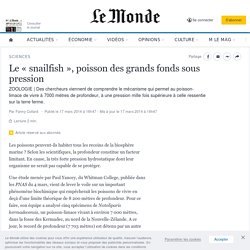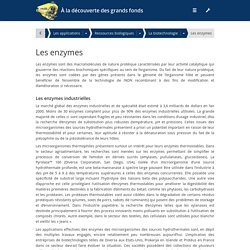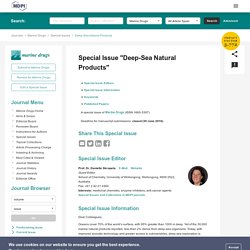

Le « snailfish », poisson des grands fonds sous pression. Les poissons peuvent-ils habiter tous les recoins de la biosphère marine ?

Selon les scientifiques, la profondeur constitue un facteur limitant. En cause, la très forte pression hydrostatique dont leur organisme ne serait pas capable de se protéger. Une étude menée par Paul Yancey, du Whitman College, publiée dans les PNAS du 4 mars, vient de lever le voile sur un important phénomène biochimique qui empêcherait les poissons de vivre en deçà d’une limite théorique de 8 200 mètres de profondeur. Pour ce faire, son équipe a analysé cinq spécimens de Notoliparis kermadecensis, un poisson-limace vivant à environ 7 000 mètres, dans la fosse des Kermadec, au nord de la Nouvelle-Zélande. A ce jour, le record de profondeur (7 703 mètres) est détenu par un autre snailfish observé dans une fosse japonaise en 2010. Seulement voilà : il faut aussi tenir compte des phénomènes osmotiques, c’est-à-dire les transferts de solutés à travers une membrane en fonction de leurs concentrations respectives.
Réaction en chaîne de la polymérase. ADN (p.ex. un gène déterminé) sur un filament génétique composé de centaines de milliers de lettres et d'en produire, en peu de temps, des milliers de copies.

Les généticiens copient des bouts d'ADN afin d'avoir assez de matériel sur lequel travailler. Par exemple, afin d'examiner s'il y a des fautes d'orthographe au niveau d'un gène qui cause une maladie. Pour cela, le généticien doit savoir avec quelles lettres le gène commence et avec quelles lettres il finit. Pour la réaction en chaîne de la polymérase on a besoin de: Primers (amorces): courts bouts d'ADN simple brin identiques au début et à la fin du gène qui doit être copié.ADN polymérase: enzyme pouvant copier l'ADN.Un appareil dont la température peut se régler automatiquement. Taq polymérase. Enzymes industrial and analytical appliation fra.
La mer est l'avenir de l'homme. Jiaolong...

Ce mot est gravé sur la coque du sous-marin d'exploration chinois de 22 tonnes qui a officiellement réussi une plongée à 3759 mètres cet été. En mandarin, Jiaolong veut dire dragon des mers. Tout un symbole. Grâce à ce sous-marin, l'empire du Milieu entre dans le petit cercle des nations capables d'atteindre les profondeurs mystérieuses des océans. Il est conçu pour descendre jusqu'à 7000 mètres. Mais que cherchent-ils tous au fond des océans, là où la lumière du soleil n'existe pas et où la vie semble aussi rare que dans les déserts les plus chauds de la planète ?
Les enzymes - À la découverte des grands fonds. Les enzymes sont des macromolécules de nature protéique caractérisées par leur activité catalytique qui gouverne des réactions biochimiques spécifiques au sein de l’organisme.

Du fait de leur nature protéique, les enzymes sont codées par des gènes présents dans le génome de l’organisme hôte et peuvent bénéficier de l’ensemble de la technologie de l’ADN recombinant à des fins de modification et d’amélioration si nécessaire. Les Archaea ultrathermophiles, de bien plus étranges créatures…
Sur Terre, la plupart des formes de vie connues sont adaptées aux températures ambiantes, entre 15 et 45° C.

Mais certains microorganismes thermophiles ont leur croissance maximale située entre 45° et 70 °C. Médiathèque de La Cité de la Mer. Protéus développe des applications à partir des micro-organismes marins mais en quoi son activité est-elle différente des autres sociétés ?

Protéus est assez originale dans ce secteur. C’est la seule société française, ou presque, à développer les applications issues des bactéries* hydrothermales. Special Issue : Deep-Sea Natural Products. Open AccessArticle Erylusamides: Novel Atypical Glycolipids from Erylus cf. deficiens by Helena Gaspar 1,2,*, Adele Cutignano 3 Laura Grauso 3, Nuno Neng 1, Vasco Cachatra 1,

Can sponges cure cancer? There are over 9,000 described species of sponge (Porifera) living in the ocean, from the intertidal zone all the way down to the abyss.

These animals have long been providing for their underwater ecosystems, but now humans are also using their chemicals. From harnessing their antibacterial qualities to treating diseases like cancer and HIV, scientists are considering sponges as a viable natural source of medicine. Deep-sea marine sponges may hold key to antibiotic drug resistance. Drug resistance to antibiotics is on the rise and there is an urgent need to develop new drugs to treat infectious diseases that are a major threat to human health globally.

Researchers from Florida Atlantic University's Harbor Branch Oceanographic Institute may have a solution to this problem using sea sponges collected from the ocean depths. For more than 30 years, FAU Harbor Branch scientists have accumulated sea sponges and other macro-organisms from the east coast of the United States, Gulf of Mexico, Caribbean as well as European and African deep waters using manned submersibles and other methods. Many of these specimens contain large populations of microbes, some of which can be grown under laboratory conditions. The Harbor Branch Marine Microbial Collection is home to about 19,000 of these diverse micro-organisms, with 11,000 gathered from ocean depths greater than 45 meters. Both the U.S. Seamounts medicine? Why your next antibiotic may come from the deep sea. Feature pic: Octocoral, sponge, and feather star on the Davidson Seamount, by NOAA / MBARI.

Our ocean is filled with amazing creatures, big and small. Most of its life is actually far smaller than we can see: there are millions of microscopic animals, plants, and more thriving in our ocean. Human lives may directly depend on these tiny creatures too, as researchers are increasingly turning to the ocean for new biomedical compounds. Someday, an antibiotic based on deep-sea microbes may even save your life! Antibiotics are a modern medical miracle, with penicillin alone credited with saving over 200 million lives. Deep-sea marine sponges may hold key to antibiotic drug resistance. Drug resistance to antibiotics is on the rise and there is an urgent need to develop new drugs to treat infectious diseases that are a major threat to human health globally. Researchers from Florida Atlantic University's Harbor Branch Oceanographic Institute may have a solution to this problem using sea sponges collected from the ocean depths.
For more than 30 years, FAU Harbor Branch scientists have accumulated sea sponges and other macro-organisms from the east coast of the United States, Gulf of Mexico, Caribbean as well as European and African deep waters using manned submersibles and other methods. Many of these specimens contain large populations of microbes, some of which can be grown under laboratory conditions. The Harbor Branch Marine Microbial Collection is home to about 19,000 of these diverse micro-organisms, with 11,000 gathered from ocean depths greater than 45 meters.
Both the U.S. From Sea Sponge to HIV Medicine. Drugs from the ocean: The next medical frontier. As medical researchers continue their efforts to improve human health, some are turning their attention to the ocean because they believe that the Earth's seas might harbor novel disease-fighting chemistry. The oceans cover more than two-thirds of Earth. As the adage goes, we know more about the surface of the moon than we do about the bottom of the ocean. The sea's ability to transition from dark, explosive rage to serene, crystal-clear calm has terrified and beguiled humanity since we first visited the beach. Scientists fear impact of deep-sea mining on search for new medicines. When Prof Mat Upton discovered a microbe from a deep-sea sponge was killing pathogenic bugs in his laboratory, he realised it could be a breakthrough in thefight against antibiotic resistant superbugs, which are responsible for thousands of deaths a year in the UK alone.
Further tests last year confirmed that an antibiotic from the sponge bacteria, found living more than 700 metres under the sea at the Rockall trough in the north-east Atlantic, was previously unknown to science, boosting its potential as a life-saving medicine. But Upton, and other scientists who view the deep ocean and its wealth of unique and undocumented species as a prospecting ground for new medicines, fear such potential will be lost in the rush to exploit the deep sea’s equally rich metal and mineral resources. “We know sponges are a very good source of bioactive bacteria so I would say they would be a good source of antibiotics and anti-cancer drugs too. But many fear this is moving too fast. Vampyroteuthis infernalis.
Vampyroteuthidae Thiele, in Chun, 1915 The Vampire Squid Richard E. Young Click on an image to view larger version & data in a new window. Pourquoi ce calmar a un gros œil qui pointe vers le haut et un petit œil qui pointe vers le bas ? Il y a d’étranges créatures dans les profondeurs de nos océans, mais il est rare de trouver un animal qui présente deux organes sensoriels qui devraient être symétriques et qui apparaissent aussi différents.
Ce n’est pas une malformation que ce céphalopode de la famille des calmars bijoux présente, mais selon les chercheurs qui l’ont étudié, deux yeux qui ont un but distinct dans les profondeurs. International Seabed Authority. Discovery of vibrant deep-sea life prompts new worries over seabed mining. Scientists track damage from controversial deep-sea mining method. For decades, mining companies have been eager to extract rare and valuable metals and minerals from the deep sea — a practice that scientists have long warned could damage marine ecosystems. Now, the first large-scale test of a major industrial-mining technique promises to provide robust data on the impacts of the controversial practice. Ocean snail is first animal to be officially endangered by deep-sea mining.
A snail that lives near hydrothermal vents on the ocean floor east of Madagascar has become the first deep-sea animal to be declared endangered because of the threat of mining. Write rules for deep-sea mining before it’s too late. Last week, the scaly-foot snail (Chrysomallon squamiferum) became the first species to be officially classified as ‘endangered’ by the threat of deep-sea mining. The creature, which has been added to the International Union for Conservation of Nature’s Red List of Threatened Species, occupies three known locations, all in the western Indian Ocean. Each is in a deep fissure known as a hydrothermal vent, and these locations include candidate sites for mining.
The potential to mint money from mining the ocean floor has long existed. Now, thanks to tech industries’ growing need for rare metals such as molybdenum and lithium, the practice is expected to take off within a decade. Seabed mining is coming — bringing mineral riches and fears of epic extinctions. In 1972, a young ecologist named Hjalmar Thiel ventured to a remote part of the Pacific Ocean known as the Clarion–Clipperton Zone (CCZ). The sea floor there boasts one of the world’s largest untapped collections of rare-earth elements. Juvenile squid avoids predators by imitating stinging jellies. Nanomia siphonophore (left) and juvenile Chiroteuthis calyx squid (right). The animals are about 20 to 30 centimeters (8 to 12 inches) long.
Image: © 2014 MBARI In the deep waters of the ocean, there are no places to hide. To avoid predators, many deep-sea animals have dark-colored, reflective, or transparent bodies. La Chine à la conquête des abysses. Challenger Deep, le point le plus profond de la planète, se situe à plus de 10 900 mètres au-dessous du niveau de la mer, à proximité des îles Mariannes, dans l’océan Pacifique.
La pression y est 1100 fois plus forte qu’à la surface de la terre. A l’heure actuelle, douze hommes ont déjà marché sur la Lune alors qu’ils ne sont que trois à avoir atteint Challenger Deep ! Le 23 janvier 1960, à bord du bathyscaphe Trieste, le Suisse Jacques Piccard et le lieutenant Don Walsh, de l’US Navy, atteignent le fond de la fosse des Mariannes après une descente de 4h 30.
Chose impensable, à cette profondeur où la pression est extrême, les deux hommes ont la surprise de découvrir plusieurs organismes vivants, dont un poisson abyssal ressemblant à une sole d’environ 45 centimètres. Un pour tous, tous pour un : les siphonophores – Culture Biologique Numérique. Si je vous dis “cnidaires”, soit vous pensez tout de suite aux méduses, soit vous avez beau lire et relire ce mot, non, ça ne vous dit rien du tout, vous n’avez aucune idée de ce que ça peut bien être.
Ce sera bientôt une époque révolue. Reconnecting with the deep sea: Discovering what lives on the ocean floor - Oceanographic - Oceanographic. Des poissons des abysses voient les couleurs dans le noir. Plus on s'enfonce sous la surface des océans, plus la lumière du jour perce difficilement l'eau, si bien qu'à 1 000 m de profondeur, l'obscurité règne.
Les créatures qui habitent ces fonds émettent certes leur propre lumière, via la bioluminescence, mais celle-ci se dissipe dans les ténèbres. Il était ainsi admis que, dans de si faibles conditions de luminosité, la vision des couleurs était impossible pour ces animaux et probablement inutile. Et pour cause : la vision des vertébrés - poissons compris - repose sur deux types de photorécepteurs, les cônes et les bâtonnets. Seabed mining is coming — bringing mineral riches and fears of epic extinctions. Abysses - La vie dans les profondeurs extrêmes. Explorer Reaches the Deepest Point in the Atlantic Ocean. Le dragon des abysses, un poisson effrayant aux dents... invisibles. La dirette argentée voit l’invisible en couleurs. Le monde des abysses, une biodiversité fragile et méconnue. This marine worm is called the Sand Striker. Rimicaris exoculata. La pollution chimique gagne les abysses.
Bioaccumulation of persistent organic pollutants in the deepest ocean fauna. NOAA Ocean Explorer: Education: Bioluminescence. Oceans Deeply — Ocean news, covering climate change, science and policy. Les héros de Game of Thrones se réincarnent dans des vers marins. The Deep-Sea Fish with the Telescopic Tubular Eyes. All the news on the Earth's largest environment. BASF, le géant de la chimie mondiale s’approprie la biodiversité des océans. La ruée minière sur les océans s’amorce, au prix probable de l’environnement. « Il faut conquérir l’océan d’une manière différente » Nautilus Minerals About Nautilus. De nouvelles espèces de poissons-limaces découvertes dans les abysses.